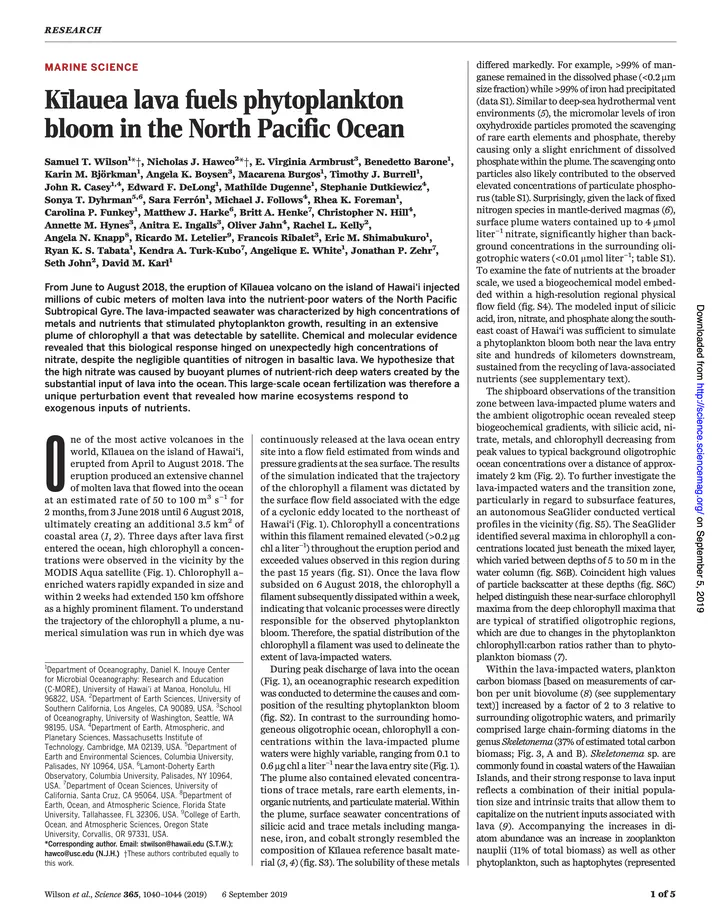
Abstract
From June to August 2018, the eruption of Kīlauea volcano on the island of Hawai‘i injected millions of cubic meters of molten lava into the nutrient-poor waters of the North Pacific Subtropical Gyre.The lava-impacted seawater was characterized by high concentrations of metals and nutrients that stimulated phytoplankton growth, resulting in an extensive plume of chlorophyll a that was detectable by satellite. Chemical and molecular evidence revealed that this biological response hinged on unexpectedly high concentrations of nitrate, despite the negligible quantities of nitrogen in basaltic lava. We hypothesize that the high nitrate was caused by buoyant plumes of nutrient-rich deep waters created by the substantial input of lava into the ocean. This large-scale ocean fertilization was therefore a unique perturbation event that revealed how marine ecosystems respond to exogenous inputs of nutrients.